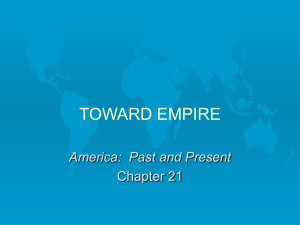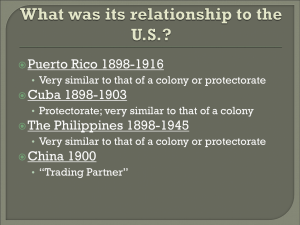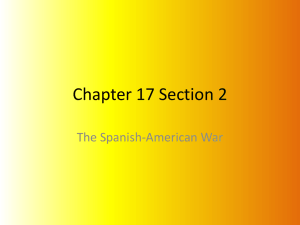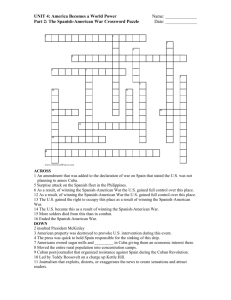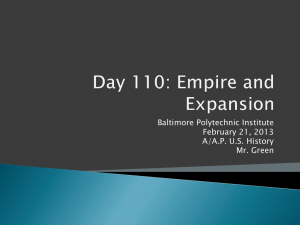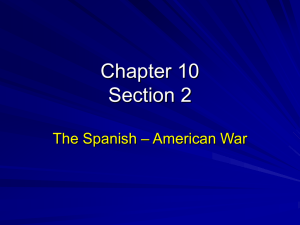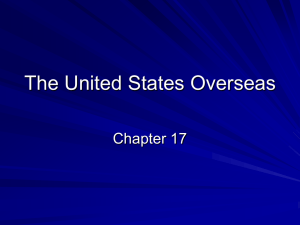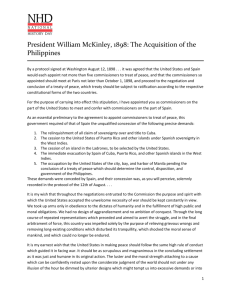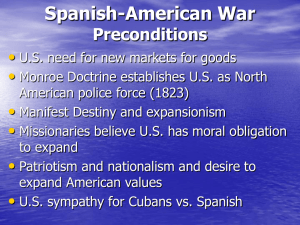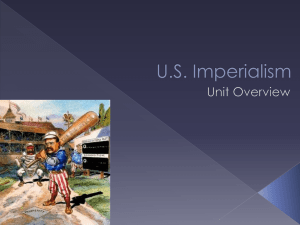9. The Spanish-American War began primarily because of events in
advertisement
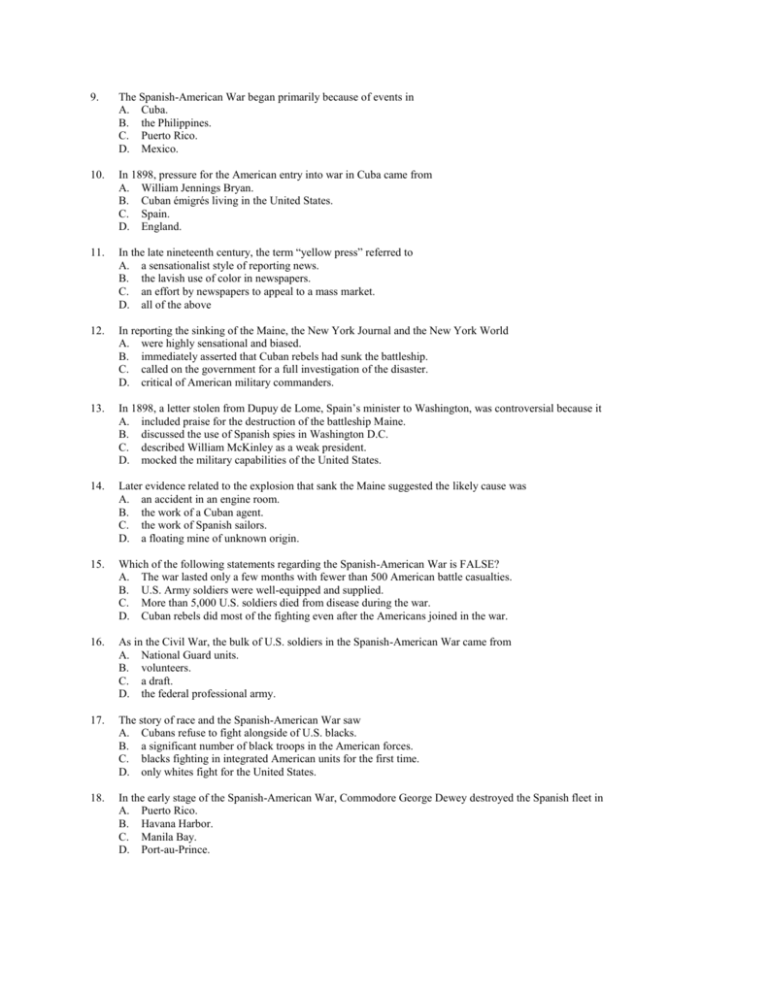
9. The Spanish-American War began primarily because of events in A. Cuba. B. the Philippines. C. Puerto Rico. D. Mexico. 10. In 1898, pressure for the American entry into war in Cuba came from A. William Jennings Bryan. B. Cuban émigrés living in the United States. C. Spain. D. England. 11. In the late nineteenth century, the term “yellow press” referred to A. a sensationalist style of reporting news. B. the lavish use of color in newspapers. C. an effort by newspapers to appeal to a mass market. D. all of the above 12. In reporting the sinking of the Maine, the New York Journal and the New York World A. were highly sensational and biased. B. immediately asserted that Cuban rebels had sunk the battleship. C. called on the government for a full investigation of the disaster. D. critical of American military commanders. 13. In 1898, a letter stolen from Dupuy de Lome, Spain’s minister to Washington, was controversial because it A. included praise for the destruction of the battleship Maine. B. discussed the use of Spanish spies in Washington D.C. C. described William McKinley as a weak president. D. mocked the military capabilities of the United States. 14. Later evidence related to the explosion that sank the Maine suggested the likely cause was A. an accident in an engine room. B. the work of a Cuban agent. C. the work of Spanish sailors. D. a floating mine of unknown origin. 15. Which of the following statements regarding the Spanish-American War is FALSE? A. The war lasted only a few months with fewer than 500 American battle casualties. B. U.S. Army soldiers were well-equipped and supplied. C. More than 5,000 U.S. soldiers died from disease during the war. D. Cuban rebels did most of the fighting even after the Americans joined in the war. 16. As in the Civil War, the bulk of U.S. soldiers in the Spanish-American War came from A. National Guard units. B. volunteers. C. a draft. D. the federal professional army. 17. The story of race and the Spanish-American War saw A. Cubans refuse to fight alongside of U.S. blacks. B. a significant number of black troops in the American forces. C. blacks fighting in integrated American units for the first time. D. only whites fight for the United States. 18. In the early stage of the Spanish-American War, Commodore George Dewey destroyed the Spanish fleet in A. Puerto Rico. B. Havana Harbor. C. Manila Bay. D. Port-au-Prince. 19. In the Spanish-American War, Theodore Roosevelt’s famous charge in the battle of San Juan Hill A. has been considered bold and reckless. B. was a minor part of the battle. C. actually took place on Kettle Hill. D. all of the above 20. The Foraker Act of 1900 A. made all Puerto Ricans citizens of the United States. B. established an American colonial government over Puerto Rico. C. put Puerto Rico under American military rule. D. called for Puerto Rico to be considered for statehood. 21. The greatest American debate over the consequences of the Spanish-American War involved A. who would control Cuba. B. the status of the Philippines. C. relations with Spain. D. the annexation of Puerto Rico. 22. The treaty concluding the Spanish-American War A. required Spain to pay the United States $20 million for its military costs. B. was quickly ratified by the United States Senate. C. transferred the Philippines and Puerto Rico to the United States. D. was rejected by Spain and was never implemented. 23. Criticism within the United States of American colonialism included all the following EXCEPT A. the financial costs of administering colonies would require burdensome taxes. B. imperialism was contrary to the nation’s commitment to human freedom. C. foreign obligations would threaten American liberties. D. the nation’s population would be “polluted” by “inferior” races. 24. In 1899, those who favored the annexation of the Philippines argued A. they were interested in greater trade with Asian countries. B. the United States was already in possession of it. C. both A and B D. neither A nor B 25. In 1899, supporters of the annexation of the Philippines argued the United States had set a precedent for taking land while treating its inhabitants as dependents in the case of A. the North’s occupation of the South following the Civil War. B. the federal government’s treatment of American Indians. C. the nation’s claiming of Florida from Spain in 1819. D. the United States’ taking of Hawaii in 1898. 26. The presidential election of 1900 A. pitted Theodore Roosevelt against William Jennings Bryan. B. saw the Democrats make significant gains in the Congress. C. found the American public largely in favor of national colonialism. D. saw many Americans express uncertainty over the morality of colonialism
